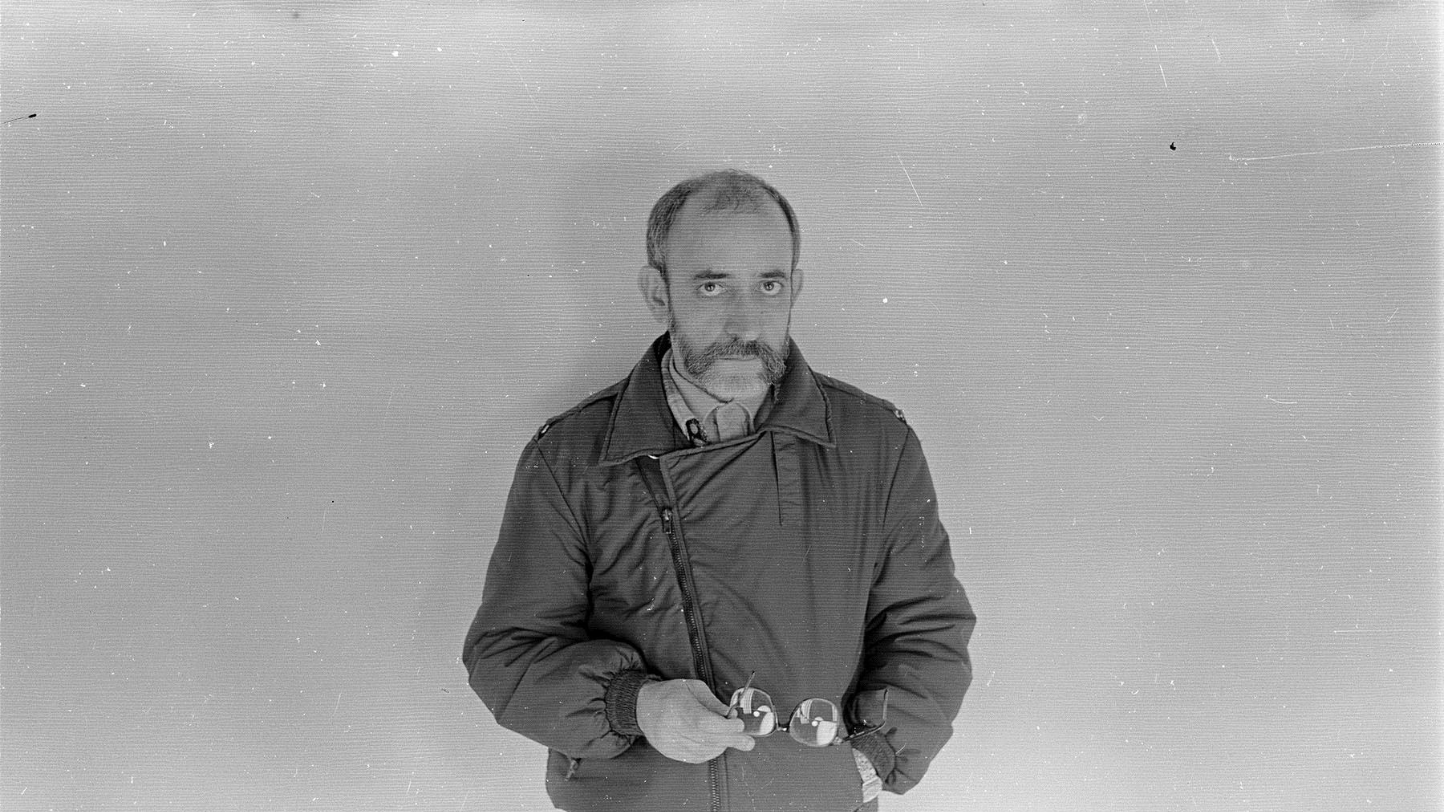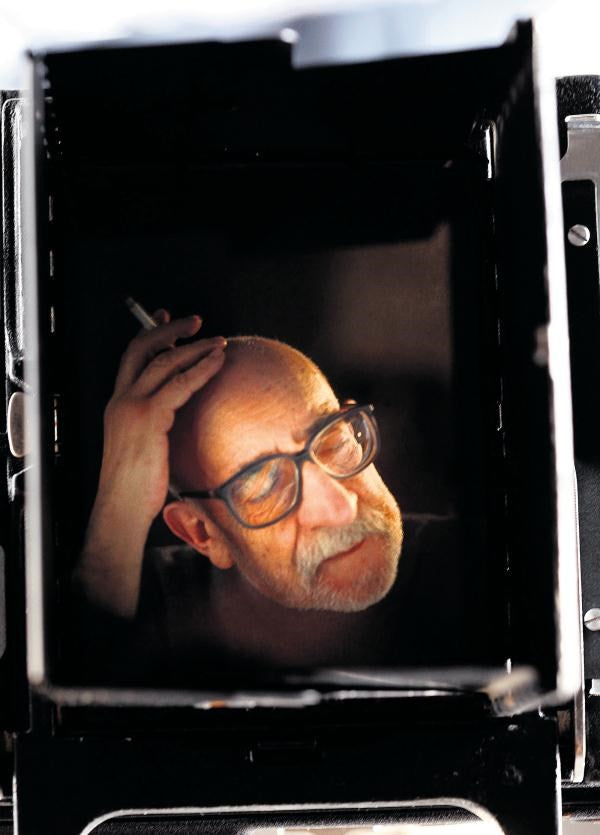
Who was Angelo de Sousa?
Angelo de Sousa was one of the protagonists of contemporary Portuguese art. The Portuguese artist was born on February 2, 1938, Maputo (Mozambique) and became known for continually experimenting with new techniques in his works. Since, sculptor, painter, pedagogue and draftsman, Angelo de Sousa is seen as a student of color and light who explored minimalism in a radical way. Find out more about the Portuguese artist here.
Color and formalism in Ângelo de Sousa's painting
He began his artistic practice with painting, having declared that his discovery of painting had been, as Klee reported: "Color takes me". By choice, he always remained on the sidelines of neo-realist polemics and debates on figuration and abstraction. He was interested before, in motivated reflections, in oriental printmaking, primitive and exotic arts and Art Brut, Expressionism, in artists such as Klee and Kandinsky and in movements such as Color Field, Post Painterly Abstraction, Op and Pop Art .
These influences are visible in his painting, in which the colorful gesture gives way, from the 70s onwards, to large chromatic planes, generating geometric games, or forming ambiguous spatialities. Color and formalism, which seem to be born organically through the movement of the line, are striking elements of his creative process, which is located in a minimalist sphere and extends to sculpture. The abstract paintings – once complex in 1967, are close to artists like Sol LeWitt, due to the unfolding of airplanes, far from the monochromatic dryness. Indeed, the painting Angelo de Sousa, even when it seems to have only one color, is the result of a complex weaving of textures, in which a deep knowledge of the perceptive mechanisms and processes of color helps to define planes that are articulated in folds and breaks.
Sculpture: The Lesser Known Facet
Despite being the least known facet of the work of Angelo de Sousa, sculpture assumed a decisive role in his artistic practice, which developed in conjunction with drawing and painting. Molder underlines this relationship: «This enunciated totality results in a kind of evidence that drawing is everything and is in everything and that, at the same time, sculpture is the form of its continuation, as a space beyond the two dimensions.» And he adds: «As in all areas of the work of Angelo de Sousa experimentation has always come first and the works let you guess. Taking materials and trying to apprehend their qualities, their properties and even their limitations are operations that all of his work makes explicit.» According to Nuno Faria: «There is, in Ângelo's work, a predominance of experimentalism, a work in constant process. Revealing precisely this aspect, a whole set of experiments was brought to the exhibition space, of found objects, models or models, things that perhaps are not yet sculpture, or that are a promise of sculpture, things without a name.» (Angelo de Sousa. Sculpture, 2006, p. 31)

As pointed out by several authors, the sculpture work of Angelo de Sousa results from an expanded understanding of this discipline: «If the first essays reveal themselves, in their experimentalism, still owing to a sculptural lineage on the threshold of modernity –Rodin or Brancusi, for example –, from 1964 onwards, the year in which the artist dedicates systematically to sculpture work, the language of the projects and pieces that appear is clearly explained and can hardly be linked either to a certain influence or to the “air of the time”.» (“Difference and Repetition”, Newsletter. Calouste Gulbenkian Foundation, n.º 70, Feb. 2006, p. 18)
In this sense, to understand Ângelo's sculpture, it is important to consider the practice in an expanded field, «whether geographically, temporally, or mentally». More than presenting the artist's sculptures, the curator intended to «give a glimpse» of his process: «Making visible the reverse side of the work, what it originates, the cause or the motto, is however vital when we try to show the sculptural production of Angelo de Sousa.» (Angelo de Sousa. Sculpture, 2006, p. 31)

Experience in the career of Angelo de Sousa
In fact, his practice, through experimentation, incorporated other means such as sculpture, drawing, film or photography. His career was marked by constant abandonments and returns, both to the techniques and to the themes he explored. There are, however, characteristics that have remained constant, such as the non-use of figuration, the economy of means and forms, or the use of series as a means of experimenting with variations on the same theme or initial idea, as with his plate sculptures. metal or bent and painted metal plates. “The restless movement of the film also appears in the sculpture, in metal, of the 60s and 70s of the last century (the "little contraptions", as the author calls them, first in acrylic and then in aluminum), and the organic quality of the works appears in the use of the body in photography and in self-portraits”, as Leonor Nazaré refers.
Angelo de Sousa's career
He divided himself intensely between art - painting, photography and sculpture -, research and teaching. Born in Mozambique, but since the age of 17 he has lived in Porto. Between 1955 and 1962, he studied painting at the Porto Superior School of Fine Arts, and from 1962 to 2000, the year in which he retired as a full professor, he taught at the same school. In 1964 he co-founded Cooperativa Árvore, Porto. He held his first exhibition in 1959, at Galeria Divulgação, in Porto, alongside Almada Negreiros. Between 1967 and 1968, with a grant from the Calouste Gulbenkian Foundation and the British Council, he attended St. Martin's School of Art and the Slade School of Fine Art in London. In 1968 he founded, with Armando Alves, Jorge Pinheiro It is José Rodrigues the group Os Quatro Vintes (so called because everyone finished their degree with a maximum score of 20), which remained active until 1972. In 1977, he was one of the artists selected by Ernesto de Sousa to participate in the Alternativa Zero exhibition. Of particular note was his participation in the 13th Bienal de São Paulo, in 1975, where he received an international prize, and in the Venice Biennale in 1978. In 1993, the Serralves Foundation organized an anthological exhibition of his painting and drawing work and, in 2001, of his photography and film work. In 2008, Angelo de Sousa represents Portugal at the 11th Venice Biennale International Architecture Exhibition, in partnership with Eduardo Souto Moura. In addition to the public sculpture created for the 3rd International Symposium of Contemporary Sculpture in Santo Tirso, in 1996, in terms of public art, the work he created for the atrium adjacent to the San José building, on Avenida da Boavista, Porto , in 2006.



